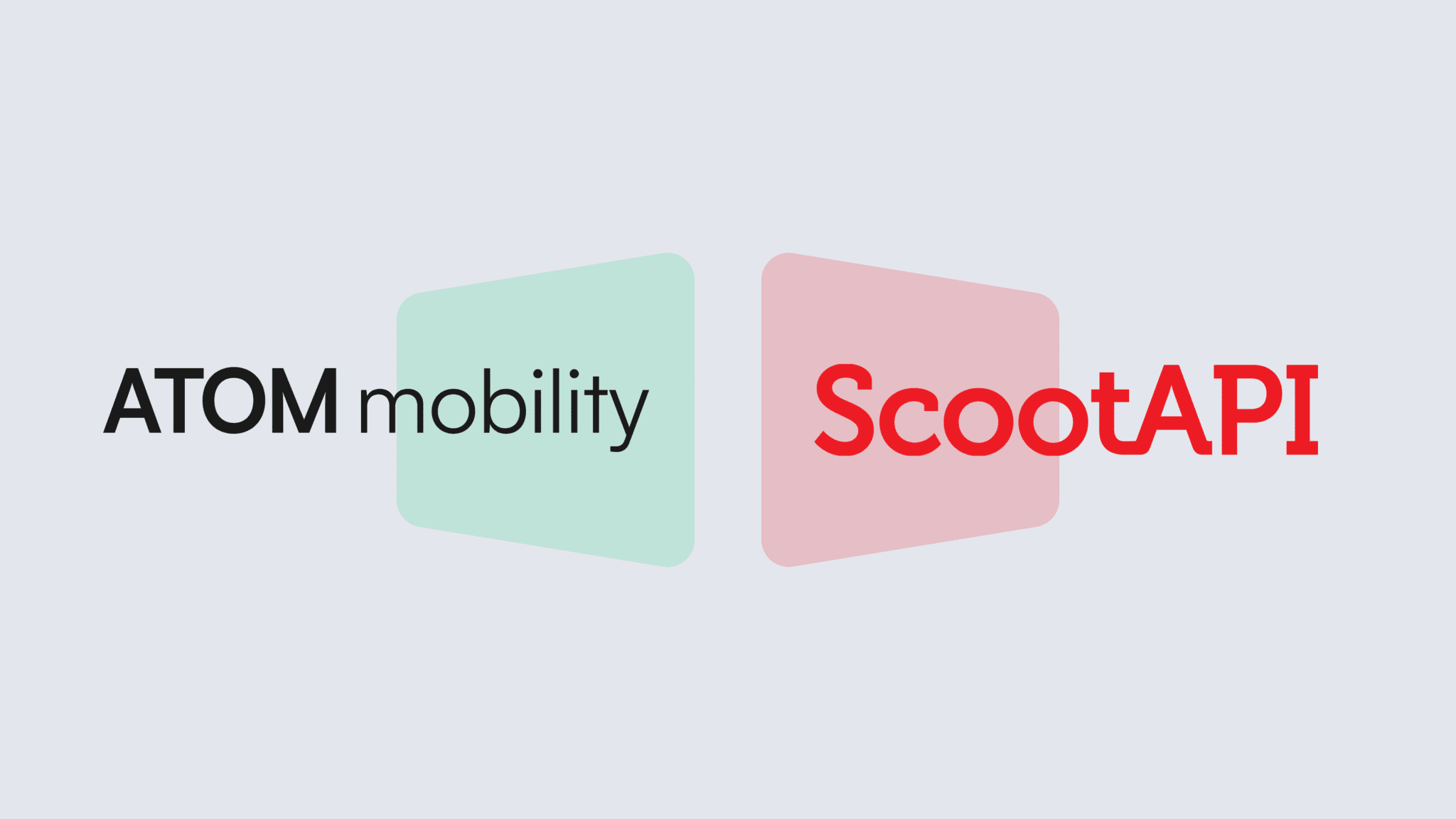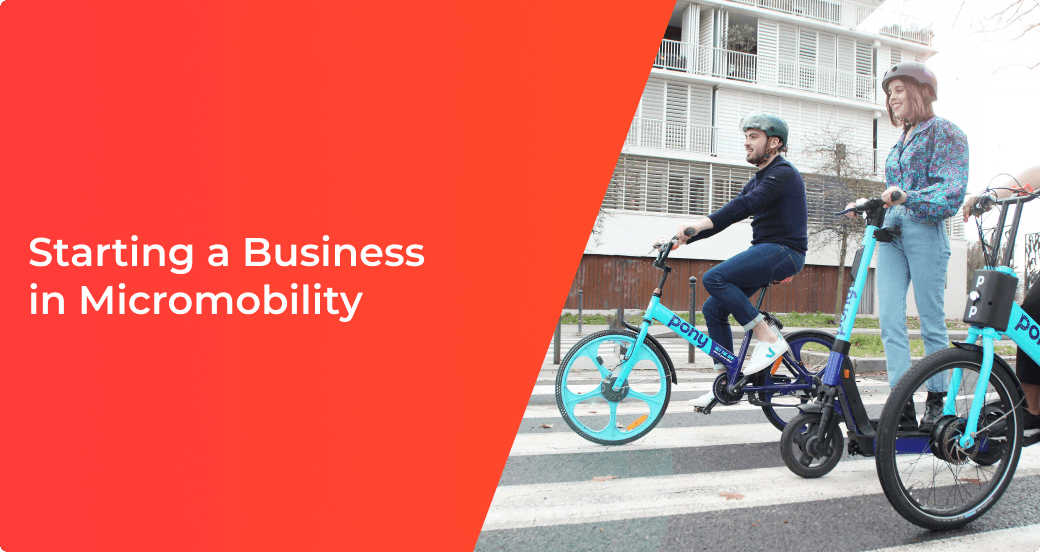If you’re planning to launch a scooter sharing service, one of the first and biggest questions you’ll face is how to build your app. Should you develop everything in-house from scratch, or go with a white label solution? Both paths can get you to market – but the time, costs, and risks are very different.
This article breaks down what goes into developing a scooter sharing app, compares in-house and white label approaches, and shows why many fleet operators and urban mobility startups are choosing platforms like Atom Mobility to get up and running faster – with less risk and more flexibility.
The basics: What you need in a scooter sharing app
A working scooter sharing service needs far more than just an app with a map and a “start ride” button. Behind the scenes, there’s a complex system connecting hardware, users, payments, fleet management, and customer support. A full solution typically includes:
- A mobile app (iOS + Android) for riders
- A backend platform for operations and fleet management
- GPS and IoT integration with vehicles
- Payment gateways and wallets
- Real-time analytics and reports
- Customer support tools
- Geofencing, zones, and parking control
- Push notifications and promo tools
- Admin tools for pricing, refunds, and bonuses
- Integration with multiple vehicle types (e-scooters, bikes, mopeds, etc.)
These features aren’t optional – they’re required for a modern scooter sharing business to work reliably and scale smoothly.
Option 1: In-house development
Building your own platform gives you complete control – but that control comes with a price. A high one.
On average, developing a basic scooter sharing app from scratch takes 8–12 months and costs between €150,000 and €300,000. That’s just to launch. Ongoing costs include:
- Salaries for developers, designers, and product managers
- Regular updates for iOS/Android compatibility
- Bug fixing, server maintenance, and security patches
- Integration with new vehicle models
- New feature development (or catching up with competitors)
- 24/7 support systems and tools
These features aren’t optional – they’re required for a modern scooter sharing business to work reliably and scale smoothly. For operators managing a variety of shared vehicles beyond just scooters, Atom Mobility also offers a flexible vehicle sharing platform that supports cars, bikes, mopeds, and more.
Option 2: White label scooter sharing platform
White label solutions like Atom Mobility provide a ready-made foundation that includes everything you need – under your own brand. Instead of spending months building a platform, you can launch in a matter of weeks.
You get:
- A fully tested, constantly updated mobile app
- An intuitive dashboard for managing your fleet
- Instant access to core features like payments, bonuses, ride history, heat maps, and more
- Easy scaling to multiple cities or countries
- Ongoing support and maintenance
- The ability to integrate different vehicle types as your business grows
Operators focusing specifically on bikes can also take advantage of Atom’s bike sharing software, which is tailored to bike fleets and user behavior in urban and resort areas.
Cost comparison: What you really pay
| Item | In-House Development | White Label (e.g. ATOM Mobility) |
| Time to Market | 8–12 months | 2–4 weeks |
| Initial Cost | €150,000+ | Starting from a few thousand € |
| Ongoing Maintenance | €5,000–10,000/month | Included in subscription |
| Team Required | 4–6 FTEs | 0 (managed by provider) |
| App & Backend Updates | Internal responsibility | Handled by provider |
| Customization Options | Full control | Branded, flexible modules |
In short: building your own solution means high fixed costs and a longer path to launch. With a white label platform, your costs are predictable, and your focus stays on operations and growth – not software bugs and release cycles.
What about customization?
A common concern with white label platforms is whether you’ll be able to make the app your own. With ATOM Mobility, the answer is yes. Operators get a fully branded app – colors, logos, pricing models, and map zones are all customizable. You can also tailor subscription models, daily passes, discounts, and push notifications to fit your audience.
For those with unique needs, ATOM Mobility also supports third-party integrations, such as advanced analytics tools, custom payment providers, or delivery apps.
Scalability: Growing with confidence
One of the biggest challenges for scooter operators is scaling to new markets or adding new vehicle types. If you’re building from scratch, each new feature or expansion requires more development. That slows down growth – and adds costs.
With ATOM Mobility, operators can grow without rethinking their tech. Whether it’s adding mopeds, e-bikes, or cars, the same platform handles it. Multiple city operations, user groups, promo campaigns, and vehicle models can all be managed from the same dashboard.
Real-world eesults: Why operators choose ATOM Mobility
Across more than 140 cities, ATOM Mobility helps operators launch and manage their fleets quickly and cost-effectively. Many of them start small – sometimes even with a single city or pilot fleet – and expand once they see stable revenue and a working system.
For example, when one operator in the Caribbean moved from a global brand to ATOM’s white label platform, they were able to control pricing, customer service, and vehicle supply for the first time. Within months, they achieved nearly equal revenue with half the fleet size – thanks to better tools, newer vehicles, and direct insight into user behavior.
FAQs
How do white label solutions differ from in-house development?
White label platforms offer ready-made software you can brand as your own, while in-house development means building everything from scratch. White label is faster, cheaper, and includes ongoing support.
How long does it take to launch each option?
In-house development typically takes 8–12 months. With a white label provider like ATOM Mobility, you can launch in 2–4 weeks.
Is a white label app customizable?
Yes. ATOM Mobility offers full branding and flexible tools to configure pricing, zones, vehicle types, subscriptions, and more.
Which approach is better for scalability and support?
White label platforms are designed to support growth. With ATOM, you get continuous updates, easy expansion, and access to new features without building them yourself.
Conclusion: Choose the Smart Path
Scooter sharing success depends on speed, reliability, and adaptability. While in-house development may seem appealing for full control, the costs and delays often outweigh the benefits – especially in the early stages.
White label platforms like ATOM Mobility give you everything you need to launch, manage, and grow your fleet – without the burden of software development. You stay focused on riders, vehicles, and revenue. The tech just works.
Explore ATOM Mobility’s scooter sharing platform:
https://www.atommobility.com/use-cases/scooter-sharing-software


